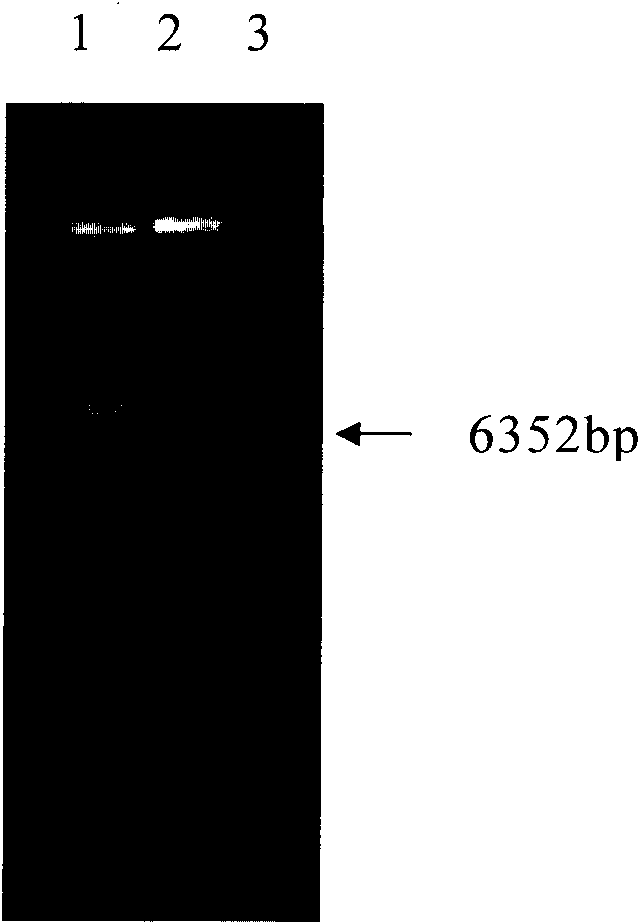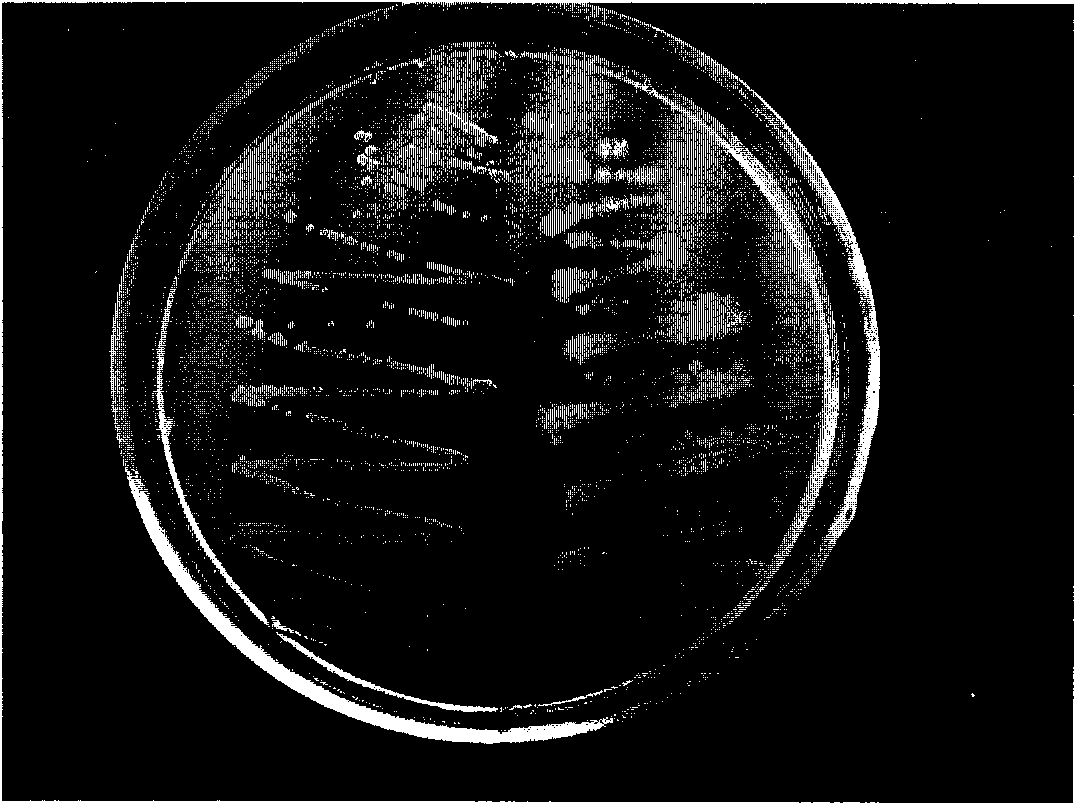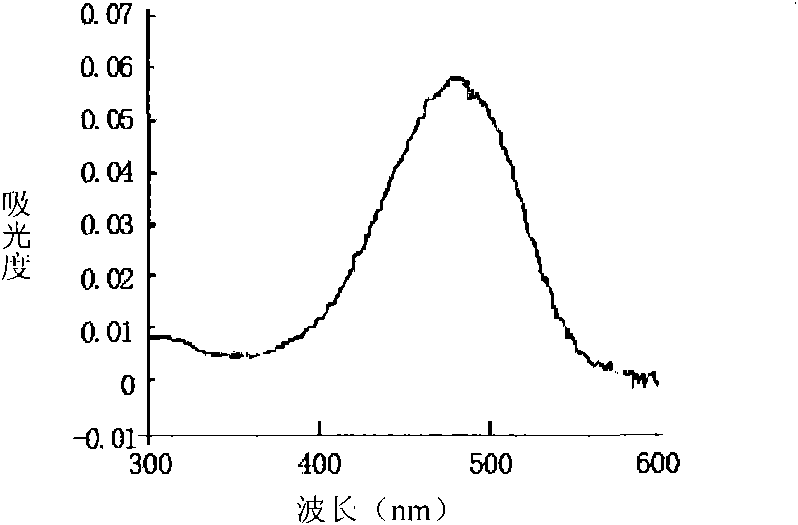Paracoccus astaxanthin synthetic operon, expressing vector and applications thereof
An expression vector, astaxanthin technology, applied in the directions of application, introduction of foreign genetic material using a vector, biochemical equipment and methods, etc.
- Summary
- Abstract
- Description
- Claims
- Application Information
AI Technical Summary
Problems solved by technology
Method used
Image
Examples
Embodiment 1
[0039] Embodiment 1 strain separation
[0040] Sludge was taken from the deep water area off the coast of Shanghai, diluted 10-100 times and spread on LB solid medium (15g / L agar, 5g / L yeast extract, 5g / L NaCl, 10g / L tryptone, phosphate buffer pH7.5), cultured at 28°C for 24 hours. Pick a red strain, the colony is round, raised, smooth, moist, with neat edges, colorless, does not produce fluorescent pigments, and Gram staining is negative; further screen the rods without flagella and spores by microscopy strains. After the obtained strain was diluted 104, it was repeatedly homozygous on LB solid plate medium.
Embodiment 2
[0041] The extraction of embodiment 2 total DNA
[0042] The bacterial single strain that is isolated in embodiment 1 is cultivated 16 hours in 10ml liquid LB medium (5g / L yeast extract (Invitrogen), 5g / L NaCl, 10g / L tryptone, phosphate buffer pH7.5) , the cell culture solution was centrifuged at 6,000 g for 5 min to obtain the cell pellet. These pellets were frozen at -20°C for 1 hr. Then use TE (10mM Tris-HCl, 1mM EDTA, pH 8.0) solution to wash once. Add 20 μl of sterile water containing 10 mg / mL lysozyme (Sigma-Aldrich) to suspend, and incubate at 37° C. on a shaking table for 1 hr. Add 50 μl of 0.5 MEDTA, 50 μl of 10% (w / v) SDS and 50 μl of 5M NaCl and shake gently to mix. Then 10 μl of protein kinase K (Takara Japan) at a concentration of 20 mg / mL was added, and the reaction was incubated at 37° C. for 1 hr. DNA was extracted with phenol:chloroform:isoamyl alcohol (25:24:1) equivalent to the volume of the culture liquid (1 volume). The aqueous phase was extracted wit...
Embodiment 3
[0043] Example 3 Paracoccus strain homology analysis
[0044] Using the total DNA extracted in Example 2 as a template, the primers at both ends of the 16s rRNA were used for amplification. The primers for amplification were 16SR1: 5'CAGAGTTTGATCCTGGCTCAG3' and 16SF: 5'TACGGCTACCTTGTTACGACTTC3'. Using KOD Plus (Toyobo Japan) as Taq DNA polymerase, the amplification conditions were as follows: 94°C for 30 seconds, 55°C for 30 seconds, 72°C for 120 seconds, and 30 cycles of amplification. After the cycle was completed, 2 units of rtaq enzyme (Bao Bioengineering (Dalian) Co., Ltd.) were added and extended at 72°C for 300 seconds, and the length of the amplified fragment was 1408bp (see below). After the PCR, 1% (w / v) agarose gel was recovered, and 10 μl was directly connected to the T / A cloning vector (Treasure Bioengineering (Dalian) Co., Ltd.), and connected overnight at 4°C. Then the vector was transformed into DH5α competent. Using the ABI3700 capillary automatic sequencer...
PUM
 Login to View More
Login to View More Abstract
Description
Claims
Application Information
 Login to View More
Login to View More - R&D
- Intellectual Property
- Life Sciences
- Materials
- Tech Scout
- Unparalleled Data Quality
- Higher Quality Content
- 60% Fewer Hallucinations
Browse by: Latest US Patents, China's latest patents, Technical Efficacy Thesaurus, Application Domain, Technology Topic, Popular Technical Reports.
© 2025 PatSnap. All rights reserved.Legal|Privacy policy|Modern Slavery Act Transparency Statement|Sitemap|About US| Contact US: help@patsnap.com



